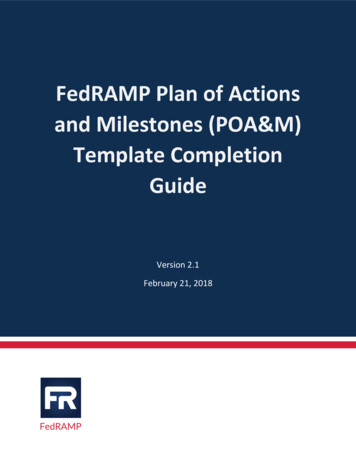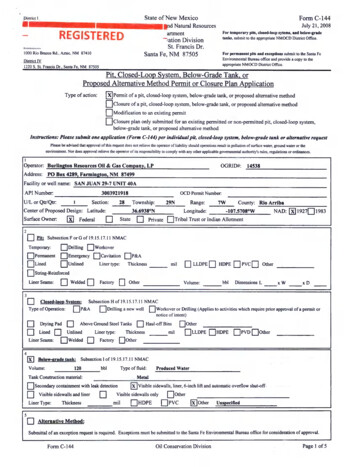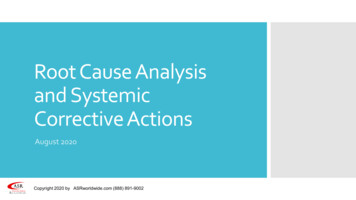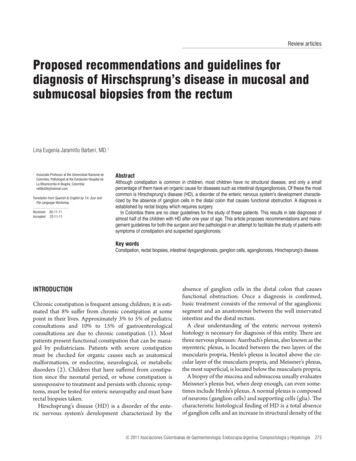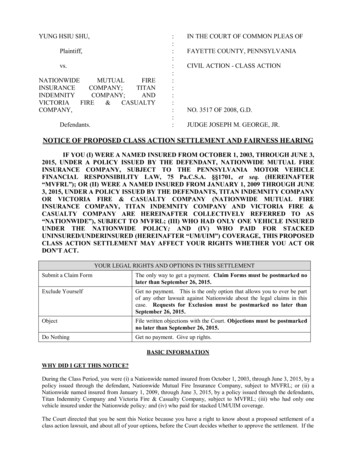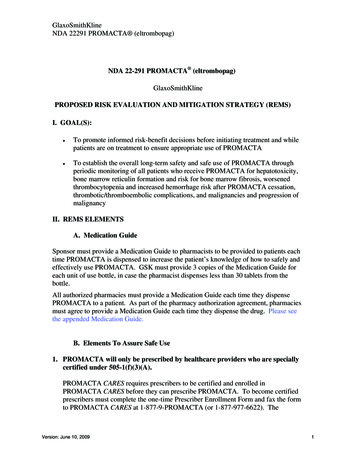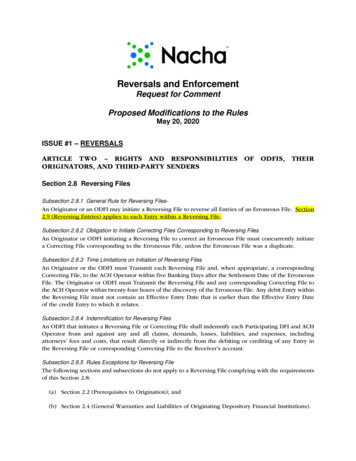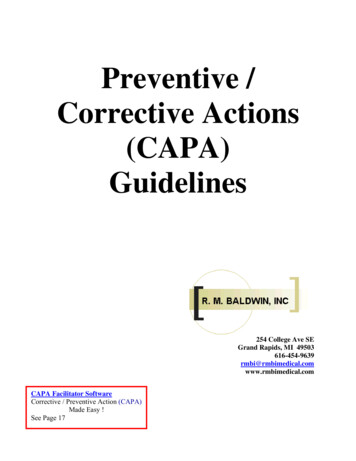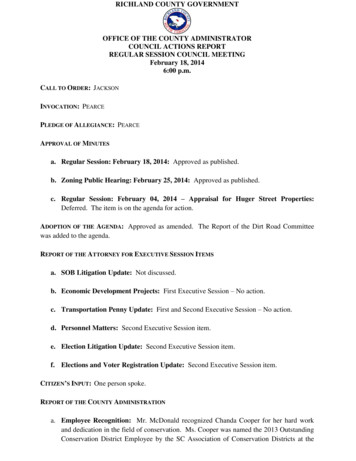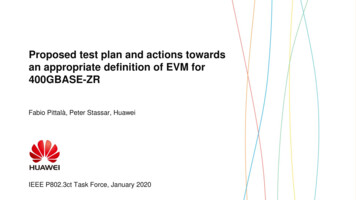
Transcription
Proposed test plan and actions towardsan appropriate definition of EVM for400GBASE-ZRFabio Pittalà, Peter Stassar, HuaweiIEEE P802.3ct Task Force, January 2020
SupporterBernd Nebendahl / Keysight2
Introduction EVMRMS has been included in the in-force Recommendation ITU-T G.698.2 as the metric todefine the quality of a 100 Gb/s DP-DQPSK transmitter.o It contains also the definition of a reference receiver. IEEE P802.3ct /D1.1 has adopted the EVMRMS definition used in the in-force RecommendationITU-T G.698.2. Work on laboratory measurements investigating the suitability of EVMRMS as the transmitterquality metric also for a DP-16QAM transmitter has been reported in IEEE802.3ct. The definition of EVMRMS as a suitable metric for a DP-16QAM transmitter in 80 km 400 Gb/sapplications in P802.3cw has to be established including the definition of a reference receiver. Presentation pittala 3ct 01a 191205 of the 5th December 2019 Ad-Hoc teleconference hasproposed a test plan and actions towards an appropriate definition of EVM for 400GBASE-ZR. The current presentation re-propose the test plan shown in pittala 3ct 01a 191205 with theintent to support a formal decision of the IEEE 802.3cw Task Force and to progress this effort3forward.
Useful Documents and Previous Contributions ITU-T G698.2: Amplified multichannel dense wavelength division multiplexing applicationso It contains the Maximum EVM definition and the reference receiver characteristics for the100Gb/s DP-DQPSK signal. The Ad Hoc presentation anslow 3cn 01 181025, and the meeting presentationsanslow 3ct 02 0319 (Vancouver) and pittala 3ct 01a 0719 (Vienna), report:o Measurement results on EVMRMS for DP-DQPSK (considered by ITU-T Q6/15 when theEVMRMS limits were defined for 100 Gb/s application codes contained in Rec. ITU-T G.698.2);o Measurement results on EVMRMS for DP-16QAM. The Ad Hoc presentation way 3ct 01b 1119 reports EVMRMS for DP-16QAM measurementresults based on a different test plan and receiver based on test equipment and offline processing. The following presentations give an introduction on the processing steps required to calculate theEVMRMS and on the reference script developed in ITU-T by Q6/15 members:o ITU session at OFC’18 (San Diego, March 2018), Specifications for coherent 100 Gbit/s DPDQPSK optical interfaces in a revision of ITU-T G.698.2;o ITU session at OFC’19 (San Diego, March 2019), Coherent Multi-Vendor InteroperableSpecifications in Recommendation ITU-T G.698.2;o Ad Hoc presentations lecheminant 3cn 01 190207 and lecheminant 3ct 01 190509.4
Proposed Test Plan for 400GBASE-ZR Standardization WorkMeasurements setupsFig. 1 Measurement setup for OSNR penalty vs EVM for non-equalizable noise like impairment.Fig. 2 Measurement setup for OSNR penalty vs EVM for non-equalizable (circle-like noise) or equalizableimpairment(s).The measurement setup in Fig. 1 (for noise likeimpairment) and the one in Fig. 2 (for nonequalizable or equalizable impairments) shouldbe used to determine following parameters:- I-Q offset (IEEE Draft P802.3ct/D1.1 154.8.10);- Quadrature error;- I-Q imbalance;- I-Q skew (IEEE Draft P802.3ct/D1.1 154.8.4);- non-equalizable impairment like circle-likenoise (zero mean noise with fix magnitudeand incremental phase) as shown inanslow 3cn 01 181025;- non-equalizable noise like impairment.5
Proposed Test Plan for 400GBASE-ZR Standardization WorkMeasurements based on setup in Fig. 1If measuring non-equalizable noise-like impairment using the setup in Fig. 1 the followingsteps are used:1) Without ASE noise generation 1, adjust the ASE noise generation 2, to get theconsidered pre-FEC BER of 1.25e-2; then first EVMRMS and OSNR values aremeasured (EVM0, OSNR0).2) a) Introducing ASE noise generation 1 and measure EVMRMS (EVM1), the pre-FECBER is changed (not 1.25e-2 anymore), b) then adjust the ASE noise generation 2,to set pre-FEC BER at 1.25e-2 again, then turn-off ASE noise generation 1 and thenthe second OSNR value is measured (OSNR1), the OSNR penalty is (OSNR1-OSNR0).3) Change the ASE noise generation 1, and repeat the step 2), more EVMRMS and OSNRvalues are measured.4) The curve of OSNR penalty versus EVMRMS is obtained.6
Proposed Test Plan for 400GBASE-ZR Standardization WorkMeasurements based on setup in Fig. 2It is preferred that measurements are obtained independently for each parameter, i.e as theeffect of varying one parameter is being measured the other parameters remain unchanged.Using IQ offset as an example the procedure is:1) Adjust the ASE noise generation, to get the considered pre-FEC BER of 1.25e-2;then first EVMRMS and OSNR values are measured (EVM0, OSNR0).2) a) Modify the transmitter to give a certain value of IQ offset and b) measureEVMRMS (EVM1), the pre-FEC BER is changed (not 1.25e-2 anymore), then adjust theASE noise generation, to set pre-FEC BER at 1.25e-2 again, then the second OSNRvalue is measured (OSNR1), the OSNR penalty is (OSNR1-OSNR0).3) Modify the transmitter to give a certain value of IQ offset and repeat the b) part ofstep 2), more EVMRMS and OSNR values are measured.4) The curve of OSNR penalty versus EVMRMS is obtained.7
Proposed Test Plan for 400GBASE-ZR Standardization WorkEvaluate Suitability of EVMRMS metric for DP-16QAMStep 1:1) Generate OSNR penalty versus EVMRMS plots containing noise like impairments anddeterministic impairments (as example circular impairment) using the setups as shownin Fig. 1 and Fig. 2. The two plots should lie on top of each other.2) Introduce a 3rd line for an individual impairment like IQ offset, quadrature error, IQimbalance (just one impairment at the time) which shows OSNR penalty vsuncompensated EVMRMS.3) Then check if the 3rd line for the particular impairment is very close to the other twolines. If this is the case we do not need to treat it as separate impairment and we wouldnot need to compensate for it in the EVM calculation.4) In case the 3rd line is sufficiently different to the other two lines then we will need tocompensate for it (as it has happened for IQ-offset for 100 Gb/s DP-DQPSK transmitters).8
Proposed Test Plan for 400GBASE-ZR Standardization WorkEvaluate Suitability of EVMRMS metric for DP-16QAMStep 2 (to be addressed after step 1 is completed).Check the OSNR penalty for combination of impairments that remain compensated by thecompensated EVM metric after step 1:1) Generate OSNR penalty versus “compensated impairment(s)” plot(s) and define asuitable limit for the individual impairment. P802.3cw would need to discuss how todefine those limits based on what the performance impact and current transmittercapability is.2) Apply the combination of individual impairments with the limit defined in 1) andmeasure the associated OSNR penalty.3) Establish whether the measured OSNR penalty is acceptable. In case it is not acceptablewe need to re-define the limit for the individual impairment (back to 1)).9
Proposed Actions to progress this Effort Forward Use test plan proposed in slides 5-9. Make the reference script available to IEEE 802.3ct Task Force members and maintain it updated. Perform measurements based on 400GBASE-ZR representative hardware.Note that this will be an iterative process, requiring inputs from multiple sources usingdifferent hardware.10
Thank You!
Use test plan proposed in slides 5-9. Make the reference script available to IEEE 802.3ct Task Force members and maintain it updated. Perform measurements based on 400GBASE-ZR representative hardware. Note that t
